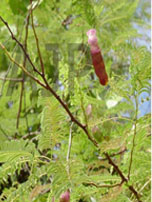SHAHEED KARTAR SINGH SARABHA AYURVEDIC MEDICAL COLLEGE & HOSPITAL
Affiliated to Guru Ravidas Ayurved University, Hoshiarpur Punjab
Affiliated to Guru Ravidas Ayurved University, Hoshiarpur Punjab

Botanical Name: Acacia catechu Willd.
Family: Mimosaceae
Introduction:
Acacias belong to the subfamily Mimosoideae of the family Fabaceae (formerly Leguminosae). According to Rig-Veda, Khadira is one of the important trees both of rituals and medicinal. Its heartwood is considered to be very strong. Along with other therapeutic applications. Dried pieces of heartwood in inflammations, skin diseases and urinary disorders, recommends its use as a blood purifier, in diseases caused by lipid disorders.
Names in different Indian languages:
English: Cutch tree, Catechu
Hindi: Khaira
Kannada: Kalu
Malayalam: Karinnali
Sanskrit: Khadirah
Tamil: Karukali, Kalippakku, Kadiram, Katthakkaambu, Kaasukkatti
Telugu: Podalianu
Unani: Khair, Kaat, Katthaa (heartwood extract).
Synonyms:
Khadira, Kadara, Somavalka, Gaayatri, Dantdhaavan, Kantaki, Raktasaara (heartwood extract), Bãlapatra, Yajñiya
Classification according to Charaka, Susrutha & Vagbhata:
Charaka: Kusthaghna, Udardaprasamana, Kasãya skandha
Susrutha: Sãlasãrãdi
Vagbhata: Asanãdi
Varieties & adulterants – (CV – controversy, AD – adulterants) :
1.Khadira – A. suma Buch
2. Kadara – A. catechuoides.
3. Arimeda.
4.Tamrakantaka.
5.Vitkhadira
6.Valli Khadira
7.Irimeda
8. A.sundra
9. Sömavalka
10. White.
11 . Blackish; brown – Externally blackish brown, soft and easily breakable. Used in medicine:
12. Brown – Used for chewing in betal leaves.
13 . Black – Not good for consumption, of bad quality
Morphology:
It is a moderate-sized tree with 10-12 m. height.
Bark- dark grayish-brown, nearly 1.5 cm in thickness, exfoliating in long narrow strips. Sapwood yellowish white but heartwood red.
Leaves- pinnate with a pair of recurred prickles at base of rachis; pinnate 40-80; leaflets 60-100, small, ligulae.
Flowers- pale yellow in cylindrical—spikes;
Fruits: Flat brown pods, glabrous, lustrous, straight, strap-shaped, dark brown.
Seeds: 4-8 per
(Flowers in rainy season and fruits in winter)
Distribution & Habitat:
In drier regions of sub-Himalayan tract upto 1500 m. (Punjab to north-eastern states) Madhya Pradesh, Gujarat, Maharashtra, Andhra Pradesh and Tamil Nadu.
Chemical constituents:
Heart wood- catechin, catechutannic acid,epicatechin, Afzelchin, gossypetin, procyanidin , taxifolin, taxifolin , phlobatannins including catechutannic acid, flavonoids- quercetin, quercitrin, fisetin, cyanidanol
Gum- L-arabinose, D-galactose, D-rhamnose
Astringent and antibacterial properties of catechu result from its high tannin content. Gambrine in pale catechu shows hypotensive effects. Fisetin in black catechu and (+)- catechin in black and pale catechu may protect against liver damage
Properties:
Rasa: Tikta, Kasaya
Guna: Laghu, Ruksa
Virya: sita
Vipãka : Katu
Karma : Kapha-pittahara, Medoghna, Dipana, Dantya
Srotogamitva:
Dosha: Reduces pitta, kapha.
Dhatu : Rakta, meda (anaemia), shukra.
Mala : Urine.
Prabhav : Kushthaghna.
Indication:
Kandu, Kãsa, Krimi, Prameha, Jvara, svitra, sotha, Pãndu, Vrana, Dañta röga and Arso roga samana
Melancholia, conjunctivitis, astringent, acrid, antiseptic, haemostatic, anemia, diabetes, splenomegaly, anti-helmintic, luecoderma
Seed extract—hypoglycaemic to normal albino rats, but not effective in diabetic rats. The saline extract of seeds shows leuco-agglutinating activity against leukaemic cells. It agglutinates white cells from patients with different types of leukaemia. The activity is inhibited by simple sugars. Root extract shows antibacterial and fungicidal activity
Part used:
Stem bark heartwood, flowers
Dosage:
Powder of bark 2-4 g, bark decoction 50-100 ml, heart wood -1-2g.
External uses:
Stambhana and kushthaghna. Being astringent and haemostatic, powder is used in wound healing and in dental conditions. In leprosy, bathing with the decoction of khadira is advised . Used for oral hygienic and pharyngeal ulcers.
Internal uses:
Digestive system: Improves taste, constipative , useful in anorexia, diarrhoea and intestinal parasites.
Circulatory system: Due to its properties, reduces oedema. Juice of the fresh bark is used as blood purifier.
Respiratory system: Reduces kapha by tikta, kashaya rasas. Useful in kapha-kasa. A lozenge prepared from khadir and cinnamonum is used for clearing the throat.
Urinary system : Kaphaghna and reduces urine output so used in diabetes.
Reproductive system : it used as a uterine tonic. It is also used in leucorrhoea
Skin: Kushthaghna and kandughna so used in all skin diseases and intense itching.
Temperature: Antipyretic being tikta and sheeta. Used in chronic fever. Satmikaran :By reducing medha and other liquid dhatus, it overcomes lethargy.
Important Yogas or Formulations:
Khadirãdi väti, Khadirãrista, Khadirãdi tailam
Therapeutic Uses:
(1) Bhagañdhara- Decoction of Khadira and Triphala is enriched with ghee and powder of Vidanga is given orally (A.Sam.)
(2) Svitra- Internal and external use of Khadira Kasaya is useful (C.S.Ci.7).
(3) Slipada- Kalka of Khadira sara, Bijasara, sãla sara is mixed with honey and given with Gomütra in the morning. (G.N.)
